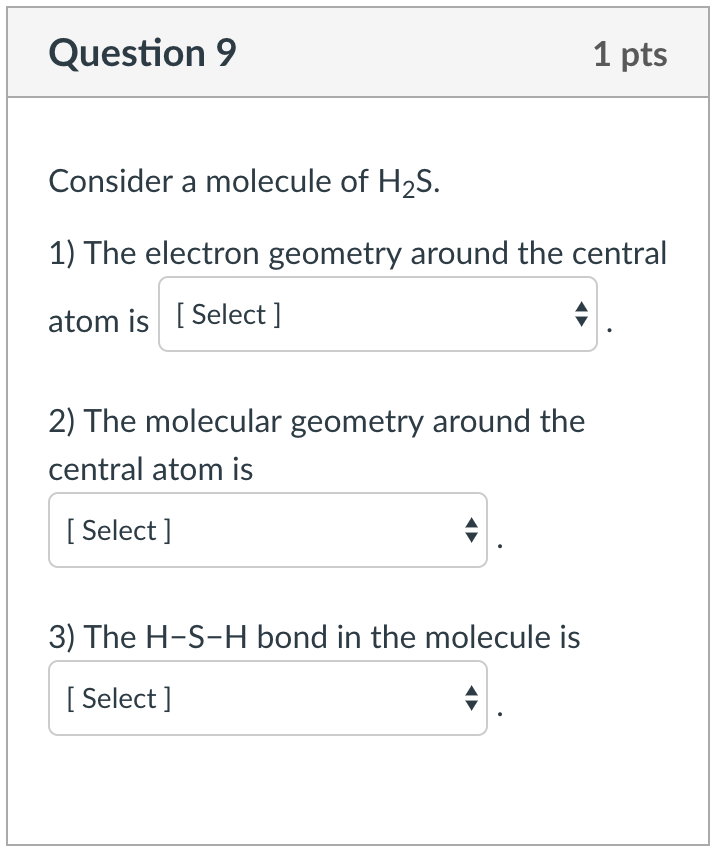

Exposures of 700-800 ppm of Hydrogen sulfide can cause loss of consciousness. High-level exposures may produce fatal systemic toxicity. Low-level exposures to H 2S may produce local eye and mucous membrane irritation. Hydrogen sulfide is a highly toxic gas and is the biggest cause of inhalational deaths. Molar mass of H 2S = 34.1 g/mol Hydrogen Sulfide Toxicity Farmers use H 2S as an agricultural disinfectant and it is found in some cutting oils, which are coolants and lubricants designed specifically for metalworking and machining processes, and other lubricants. Hydrogen sulfide is used primarily to produce sulfuric acid and sulfur. It plays a vital role in signaling pathways in the human body. However, since the carbon dioxide molecule is linear, these two bond dipoles cancel each other out.Īs a result, the overall molecule has no dipole. The central carbon contains a net positive charge while the two outer oxygens a net negative charge. Polarity of CO 2Ĭarbon dioxide is a nonpolar molecule that contains polar bonds.ĬO 2 is a linear molecule and the C=O are polar bonds. This develops a dipole moment in the water molecules. Oxygen also has two lone pairs of electrons. Since oxygen is the more electronegative atom, it exerts a greater pull on the shared electrons. The difference in electronegativity is 1.2 for each of the H-O bonds. The molecule consists of two H atoms and one oxygen atom. 
H 2O is another example of a polar molecule. In the case of symmetric structure, the dipole vectors on each molecule cancel each other, resulting in the nonpolar nature of the molecule. A molecule is polar if the structure of that molecule is not symmetric. Polarity is determined by electronegativity. The molecular geometry of Hydrogen sulfide is polar but the bonds are not polar. Some examples of polar molecules are Water (H 2O), Ethanol, Ammonia, and SO2 (Sulfur Dioxide). The slight electrical charges on dissimilar atoms are called partial charges, and the presence of partial charges signifies the occurrence of a polar bond.

H2s molecular geometry full#
(For details check the full article “Is HCl polar or nonpolar?”. In hydrogen chloride, for instance, the H atom is slightly positively charged whereas the Cl atom is slightly negatively charged. Specifically, it is found that bonds between atoms of different elements are electrically inequivalent. The distribution of electrical charge over the atoms joined by the bond causes polarity. These lone pairs of electrons make the H2S structure bent. The remaining four electrons are unbonded electrons and are displayed as dots near the sulfur atom. Two out of six valence electrons participate in bond formation. Sulfur shares electrons with both the neighboring hydrogen atoms to make the molecule stable. Two hydrogen atoms are located on both sides of the central sulfur atom. The sulfur atom is in the middle of the structure and valence electrons are arranged around it. There are eight valence electrons in the molecule. In the H2S Lewis structure, there are two hydrogen atoms on both sides of the central sulfur atom.
Is H 2S Polar or Nonpolar: H 2S is slightly polar. Its boiling point is -60.4 degrees Celsius. This means it is likely to be found in low-lying areas with little to no ventilation. It is heavier and 1.136 times denser than air. It is highly explosive and only requires a concentration of 4% for a flash fire when exposed to a relatively cool heat source of 232 Degree Celsius. It forms hydro-sulfuric acid when dissolved in water. Soluble in water and many other liquids. In low concentrations, it smells like rotten eggs. It emanates from sewers and as a by-product of industrial processes. Hydrogen sulfide is a colorless toxic gas. The repulsion between the 2 lone pairs of electrons plays a major role in making its bent molecular geometry. There are two lone pairs of the sulfur atom in the Hydrogen sulfide lewis structure. The Sulfur atom is in the center bonding with two H atoms forming the bond angle less than 180 degrees.Īccording to the VSEPR theory, the lone pairs of electrons repel each other. The hybridization of the Hydrogen sulfide molecule is sp3. VEs in Hydrogen sulfide = VEs in 1 S atom + VEs in 2 H atoms Sulfur has six valence electrons. The table below gives details about the electronic configuration of constituent atoms and their valence electrons. Hence there are two valence electrons for the H atom ( as there are two H atoms). The molecule has two H atoms and a single S atom.Įach H atom has only one electron which is also its valence electron. To understand the partial slightly polar nature of H 2S, we need to understand its structure.







 0 kommentar(er)
0 kommentar(er)
